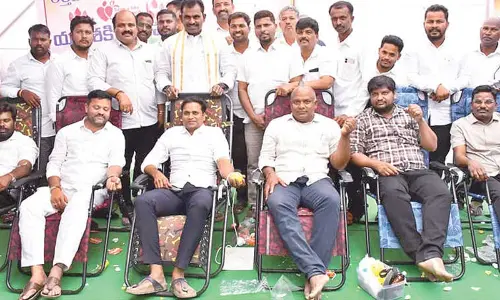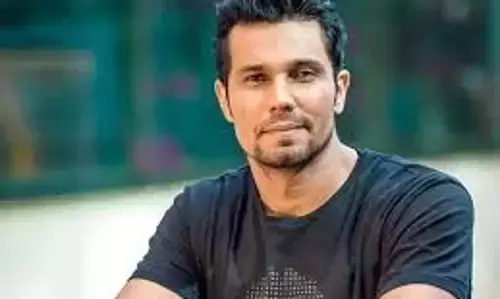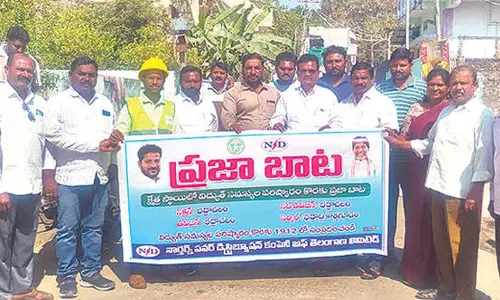MVN Shankar was a senior journalist for the Telugu-language daily Andhra Prabha, who had frequently reported on the "oil mafia, was murdered by group of unidentified assailants with iron rods for his coverage of group that had engaged in the illegal sale on the black market of rationed essential items, including kerosene oil, for the poor, which was supplied through the public distributions system in the year 2013.

Beaten and beaten till he was shaken, poured kerosene and burnt alive by the policemen on the orders of Rammurti Singh Verma, who is the Backward Class Welfare Minister of State (MoS) in the Akhilesh Singh Yadav-led Samajwadi Party government to vernacular journalist, Jagendra Singh, 42, from Shahjahanpur in Uttar Pradesh on 8th june for exposing the minister for land-grabbing, illegal mining and the rape of women in Anganwadi worker etc. No one in the ‘national’ media thought it fit to report the news at first, but hell was raised by furious family members who refused to perform his last rites unless an FIR was filed against the minister, the cops and his associates. The police had no option and a case was finally registered. Inspite of dying declaration by the deceased the police administration’s inability to take stringent action against the accused seems to be order of the day.
In the Main stream Media, there were only cursory, inside page stories, no prime time mention—forget high-decibel and outrageous debates—on national channels with the usual MSM suspects. Was it “tyranny of distance”? Or was it something else? Oh! I forgot, many in the MSM don't consider some anti-corruption crusaders or social media activists as ‘journalists’ outside their definitions. He ran an ‘online’ Hindi paper and so did not belong to their elite ‘fraternity’.
Death Watch, the International Press Institute's register of the number of journalists killed annually the world over, has revealed that 32 scribes were slain in India in up till 2015. The figure puts India a little behind Syria, Iraq and the Philippines where the death tolls of journalists in the corresponding period were 16, 13 and 13, respectively. Incidentally, 2014 was the second deadliest year in terms of such casualties: globally, a total of 70 journalists died either because they were scribes or in the course of discharging their duties.
Yet, there is a significant difference in the circumstances that led to these killings. In Syria and Iraq, for instance, the journalists lost their lives while covering the ongoing sectarian bloodshed. In India — officially free of strife — the murders took place primarily on account of a different kind of conflict: the battle to uncover truths related to corruption. The murders in India raise a pertinent question: should our understanding of conflict be limited to the violence that results from communal, secessionist and ethnic strife only? Should not conflict entail covert, but equally lethal, battles — ethical and ideological — that are waged by investigative journalists against corrupt businessmen, public servants and politicians? Nominal safety It would be a travesty to suggest that all journalists are crusaders.
Not every scribe is vulnerable to physical threat, as is evident from the Death Watch data. For instance, those working on the entertainment beat remain comparatively safer than reporters or stringers employed by smaller, vernacular publications in India's restive hinterlands, such as Etawah, Bulandshahr, Muzaffarnagar, Bastar, and so on. The vulnerability of the stringers reporting from such areas is compounded by the absence of institutional coverage. Most of them are nominally employed by media companies and lack the benefits as well as the leverage commanded by their more fortunate colleagues working in metropolitan centres. Reams have been written about the murder of a crime reporter of a popular Mumbai- based newspaper, but not much is known about the systematic elimination of small- town scribes. The murders also show that the shield of civic liberties and constitutional safeguards that protect citizens in metropolitan India can be easily breached elsewhere.The State, understandably, shares an uneasy relationship with fact- finders. Hence legal provisions are compromised. Even the Whistle Blowers' Protection Act is a conservative legislation because it equates protection with anonymity.
The nodal agency is empowered to direct the government to maintain the anonymity of the complainants even though the State is usually complicit in the irregularities that are brought to light by enterprising citizens, be they journalists or activists. There is thus merit in the allegations that redressal mechanisms such as the lodging of first information reports, getting the police to accept them, their presentation to a designated judicial authority and periodic reviews of threat perception remain inadequate.
The Bombay High Court, while hearing a case related to the murder of a prominent RTI activist in 2010, had directed the state government to expedite the investigations into threats issued to complainants, institute a monitoring system and create a database of social crusaders. Yet, Maharashtra, according to the Commonwealth Human Rights Initiative, tops the list of states that have witnessed brutal assaults on activists. The glamourization of journalism has also contributed to skewed depictions of the profession in popular culture. Everyone seems to be aspiring to become a pretty, microphone- totting scribe. But is anyone keeping count of her dead colleagues in real life?
JAVVADI LAKSHMANA RAO


















